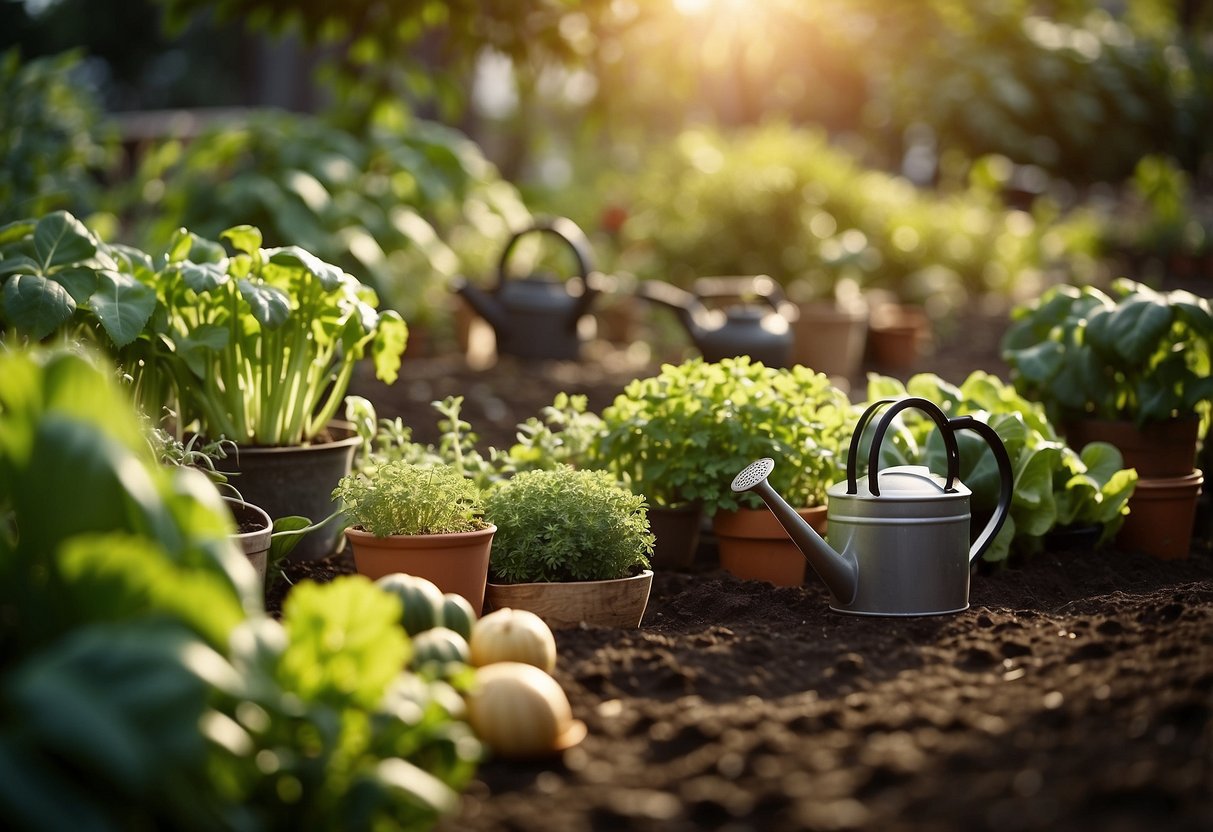
Preparing Your Garden Plot
Proper preparation of your garden plot is crucial for healthy plant growth. Focus on clearing and tilling the soil and building raised beds to provide a structured and conducive environment for your vegetables.
Clearing and Tilling the Soil
Begin by removing any weeds, rocks, and debris from the selected area. It’s essential to eliminate all obstacles to ensure your plants have enough space and nutrients to grow. Use tools like a garden fork or a hoe to make this process easier.
Once the area is cleared, it’s time to till the soil. Tilling helps to aerate the soil and mix in organic matter, which improves soil structure and fertility. A rototiller can be very effective for larger plots, while a hand tiller might suffice for smaller areas.
Pay attention to soil depth. Aim for at least 6-8 inches of well-tilled soil, as this allows roots to penetrate and establish themselves. After tilling, you may want to test the soil’s pH and nutrient levels to determine if any amendments are necessary.
Building Raised Beds
Raised beds offer numerous benefits, including better soil drainage and weed control. To build a raised bed, first decide on the size and location. Standard sizes are 4 feet by 4 feet or 4 feet by 8 feet, ensuring accessibility from all sides.
Use untreated wood, bricks, or other non-toxic materials to construct the frame. The bed should be at least 12 inches high to allow roots ample space to grow. Fill the bed with a mix of garden soil, compost, and other organic material to create a rich, fertile environment.
Ensure proper spacing between beds to allow for easy movement and maintenance. Raised beds warm up quicker in the spring, giving you a head start on planting. This method also reduces soil compaction, which is beneficial for plant health.
Common Challenges and Solutions
Starting a vegetable garden offers its own set of challenges. Among the most common difficulties are managing pests and dealing with plant diseases. Here’s how to tackle these issues efficiently.
Pest Control Strategies
Pest control is crucial for maintaining a healthy vegetable garden. Garden pests like aphids, caterpillars, and slugs can wreak havoc on plants. Introducing beneficial insects, such as ladybugs and lacewings, can help keep harmful pests in check.
Regular monitoring can catch infestations early. Insecticidal soaps or neem oil can also be effective for treating pest problems organically. For larger pests, such as rabbits or deer, fencing and physical barriers are often necessary. Companion planting, like placing marigolds around tomatoes, can naturally deter insects.
Mulching can further benefit pest control by maintaining soil moisture and reducing the habitat for pests.
Dealing with Plant Diseases
Plant diseases can spread quickly and devastate a garden if not properly managed. Fungal diseases like powdery mildew and blight are common threats. Improving air circulation through proper spacing and pruning can reduce the incidence of such diseases.
Water plants at the base rather than overhead to prevent the leaves from getting wet. Using disease-resistant plant varieties can also minimize problems. Remove and dispose of any infected plants immediately to prevent the spread of disease.
Crop rotation is another effective method. It helps in preventing soil-borne diseases. A regimented schedule and maintaining cleanliness in the garden can significantly reduce the risk of plant diseases.